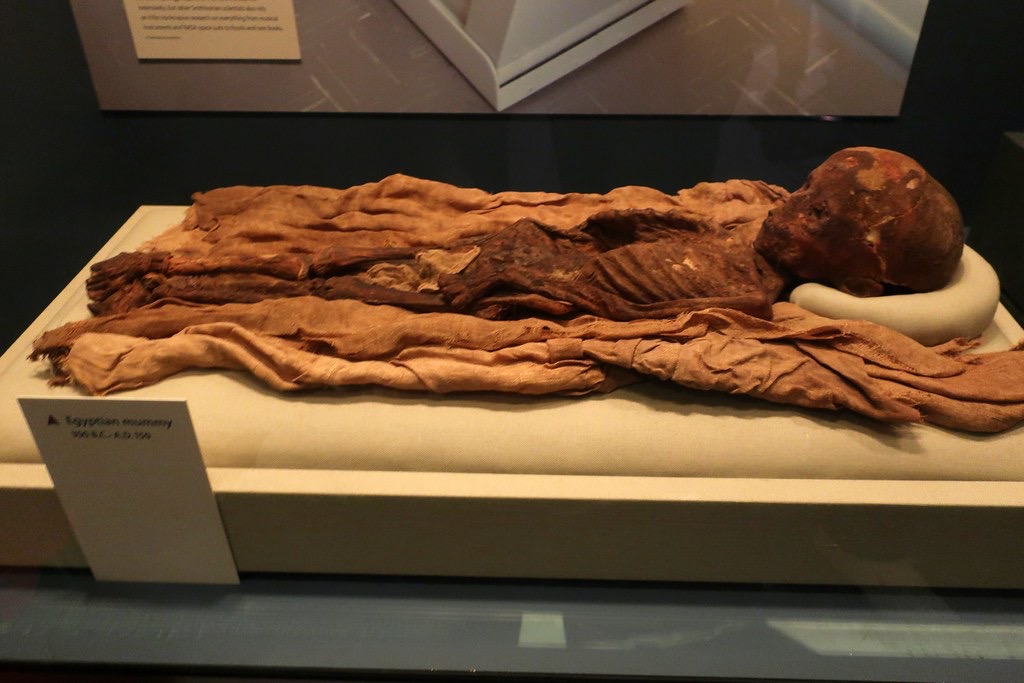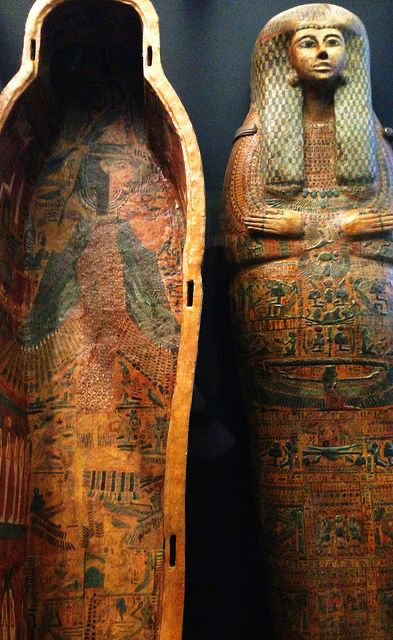When I go to mueseums, I typically browse for an hour or two, briefly read the some of the descriptions and think about how cool it is that they managed to find all of these artifacts or paintings from so long ago and provide hundreds of thousands of people the opportunity to see it.
But I never thought about how they came in the mueseum’s possession or if it is acceptable for them to even have or display these items. After learning about the ethics and colonization surounding museums, I came to realize how much of these collections shouldn’t belong in them as a multitude of these artifacts are stolen or simply have no reason to be displayed as it serves no substantial purpose.
To further my understanding of items museums should or should not display in terms of ethics and morality, was through the exhibit I decided to focus on for this project in the Smithsonian: External Life in Ancient Egypt. I was atonished to see that they were displaying real life mummies from this time period. The little signs next to these bodies say things like “This is a real life mummy!” and that this body was a man 2,000 years ago…etc.I think it is safe to say that anyone who comes across exhibits like these may feel at least a little disturbed. Not only from the fact that a dead body is being displayed like a painting, but the fact that people decided to dig this body up and profit off of it.
As I delved into the other parts of the exhibit, I noticed I became more consciously aware of the unethics surrouning the display of these artificacts. Especially since the artifacts shown are so sacred to the ancient egyptian culture and were meant to stay concealed and secretive. For example the display of the artifacts that were found inside tombs. The ancient egyptians strongly believed in the afterlife, so there was a very ritualistic apprach to burying bodies, especially ones of higher power. These items were buried with the body so they could use them in the afterlife.
A certain section of the exhibit that I found to be particularly interesting was the one that displayed an empty tomb. It is a very beautiful artifact to look at because of all of the intricate carvings. The sign names this section as “The Story in the Coffin”, so all of the carvings, and symbols all over the tomb tell a story from the events of that time period. This raises the question of whether or not the egyptians may have intended for people in the future to see these relics so they can keep these stories alive. And is it okay for museums to be displaying these artificats even though they were excavated?
The concept of tombs originated in ancient Mesopotamia dating all the way from the early dynastic period and was known as The Great Death Pit. This was where servants of royalty would be buried with them so they can still serve them in the afterlife. This same idea of afterlife was a pretty universal concept amongst different cultures other than Egypt, like Rome and Israel. The most intricate tombs were the ones made for Pharaoahs in Ancient egypt. Egyptians would build these structures called Mastabas which were tombs made out of dried clay bricks and each of them contained a room where spiritual ceremonies were held for the dead. furhter emphasizing how much they value the afterlife and the elaborate processes associated with these burials.
Tombs have always been viewed as homes of the dead and considered their final resting place. Because this was such a valued ideology amongst a multitude of cultures and especially in egyptian culture, museums disturbing these artifcacts and taking them from their orignal home has a much greater impact on the group that it’s being taken from, as opposed to the people who breifly see it in an exhibit for 5 minutes.
I really liked being a part of this project as I feel I learned a lot more about museums and the colonization and unethics surrounding it. It further gave me the opportunity to learn more about Ancient Egypt, and widened my perspective on consumerism and material culture.


You must be logged in to post a comment.